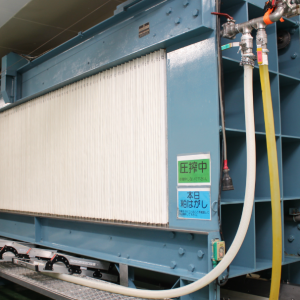
Pressing and Filtering Sake
When sake brewing is complete, the next step is to separate the raw sake from the rice mash, resulting in a clear liquid. This important method, widely referred to as “pressing,” is more accurately defined as a filtration process. There are a few techniques for filtering that will result in differing styles and quality levels.
Types of Filtration Techniques
◆Yabuta-Shibori (Assakuki)
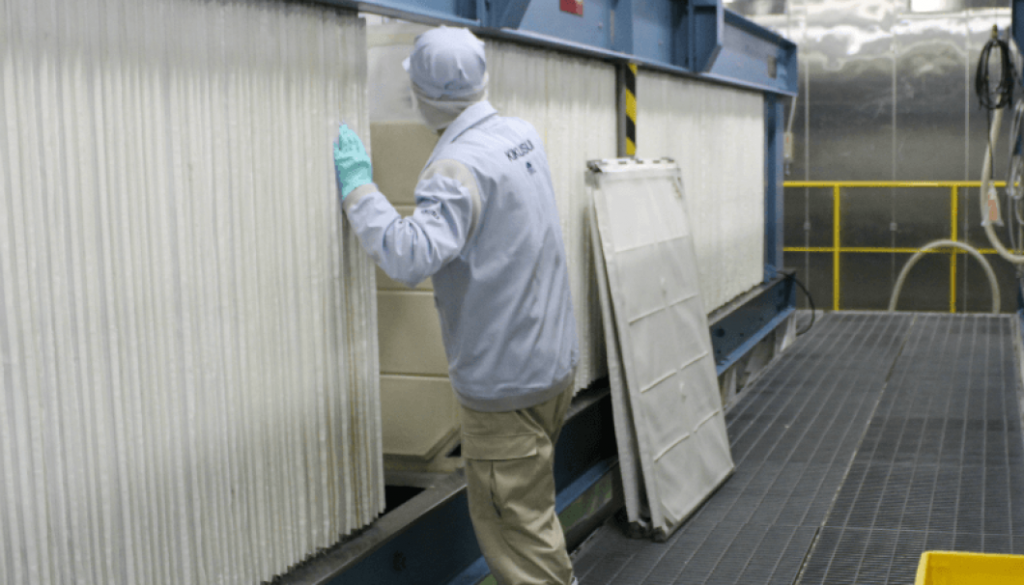
Yabuta-shibori is the industry standard for pressing. Here, sake is bagged and placed in an assakuki machine that pumps air into inflatable bags to gently squeeze the sake out and leave lees behind. The air pressure and speed can be adjusted depending on the type of sake desired. Larger machines can filter in as little as a few hours. This type of filtering is more commonly known as “Yabuta,” referring to the most popular brand of assakuki machine. Yabuta-shibori allows a large amount of sake to be processed and can be used for anything from simple futsu-shu to high-end daiginjo.
◆Fune-Shibori
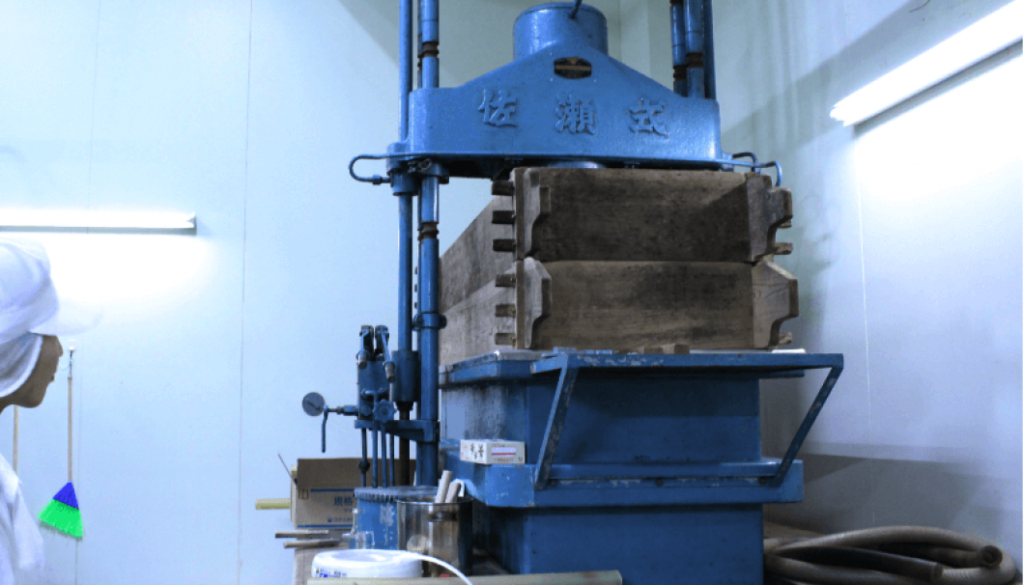
The most traditional method of pressing is simply filling cloth bags with sake, placing them in a metal tub and then applying pressure. The sake liquid is released at the bottom of the machine and the sake lees remains inside the cloth bags. This filtration process is slower than some others and takes about two days, resulting in a more refined brew. This type of filtration process is best for higher quality sake with lower polishing rates.
◆Fukuro-Shibori
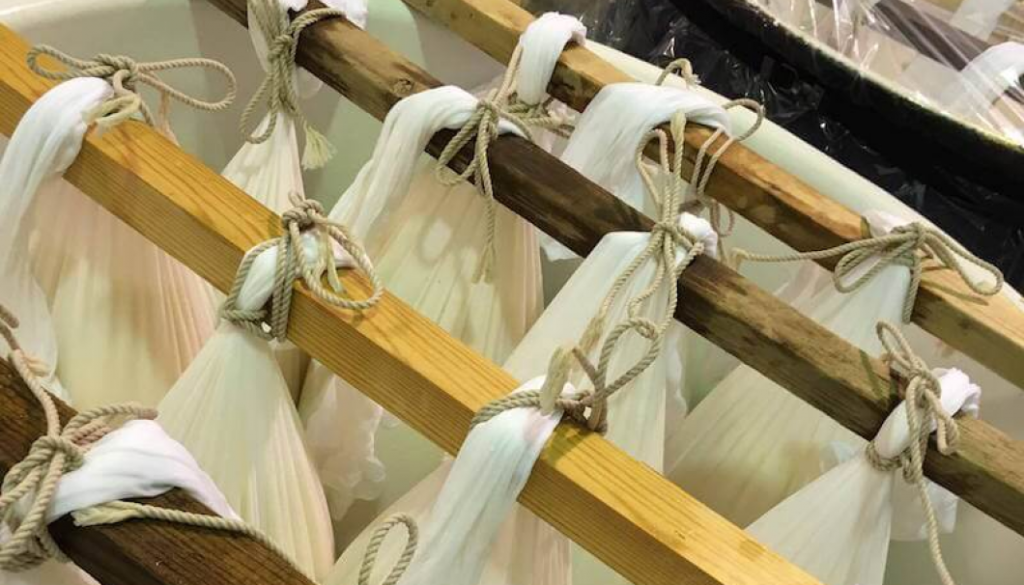
This filtering method uses the least amount of pressure and is reserved for premium sake of extremely high quality. Freshly brewed sake is poured into small cloth bags that are then hung. Gravity then causes the sake to slowly drip out over time. Sake pressed this way is typically marketed as “shizuku.”
Styles influenced by pressing techniques
Nigori – Nigori is a cloudy sake with sake lees remaining in the liquid for texture and flavor. Breweries making this style of sake apply a coarse filtration with mesh filters that leave some lees behind.
Arabashiri – The first portion of sake released from a filter without any added pressure. This sake is lively and fresh, with some dissolved CO2 adding a refreshing texture.
Nakadori – The middle portion of the sake released from pressing is considered the highest quality with the smoothest texture. This portion begins after arabashiri and before the last portions of the pressing, called the seme.
*If you would like us to send you monthly updates and information, register here.
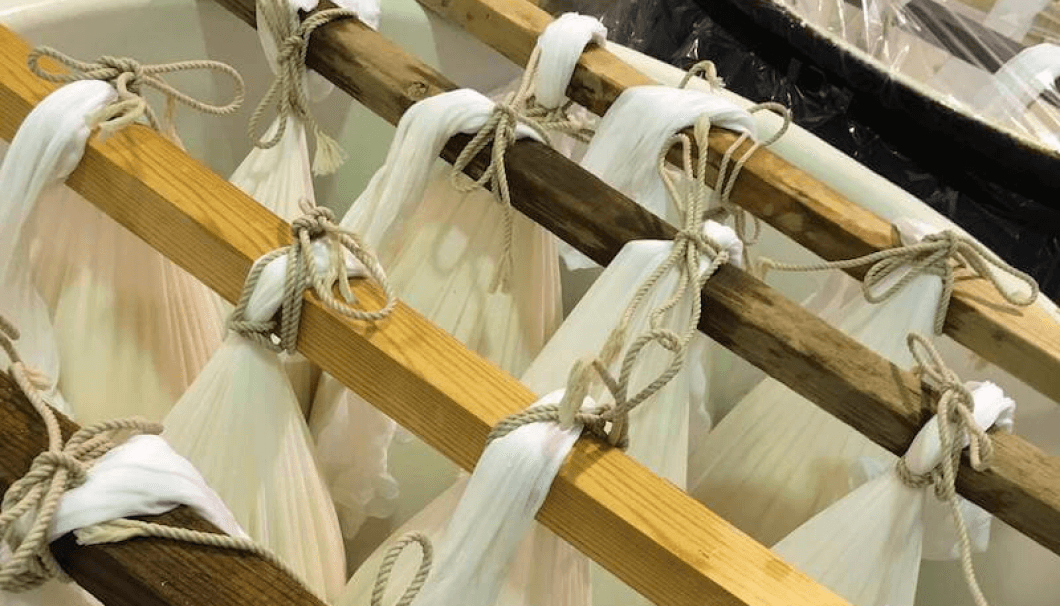

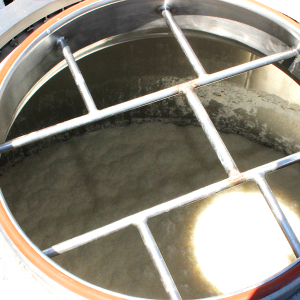
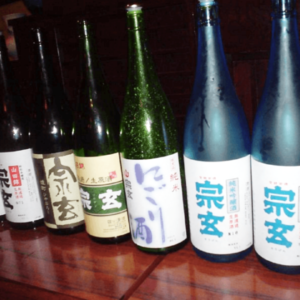

Comments